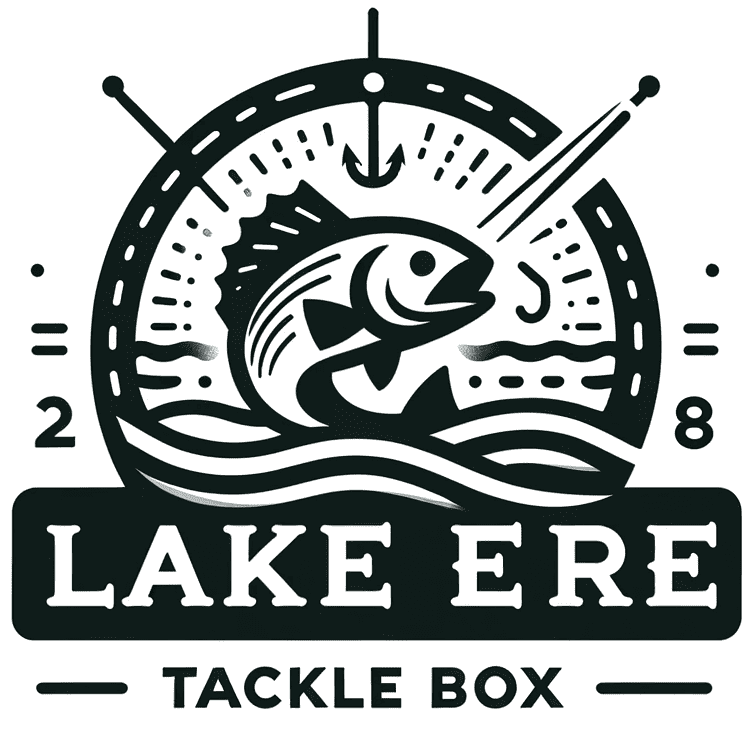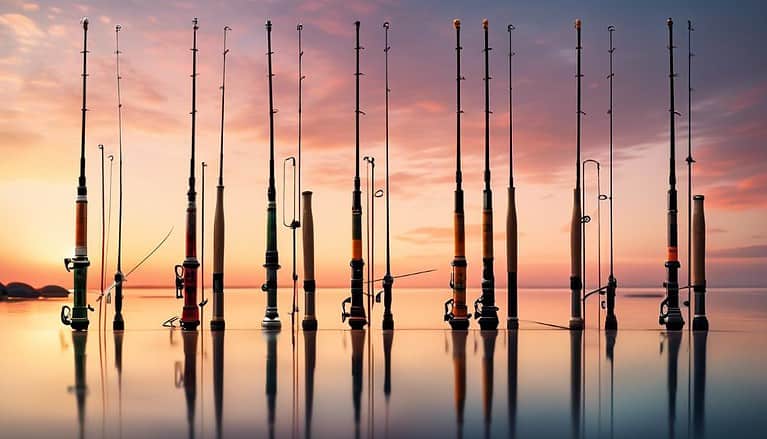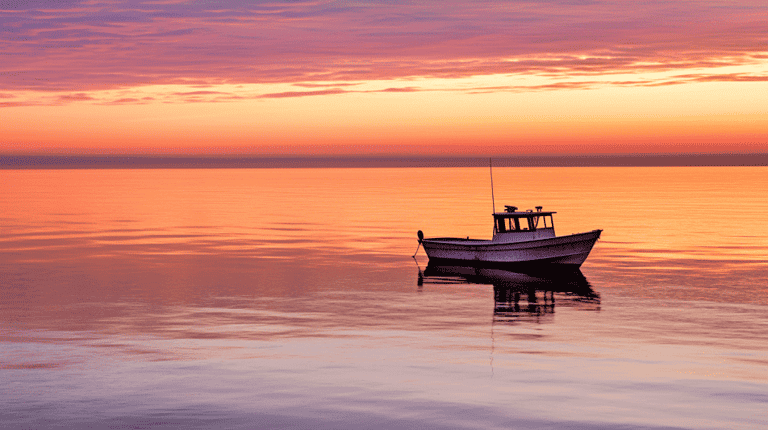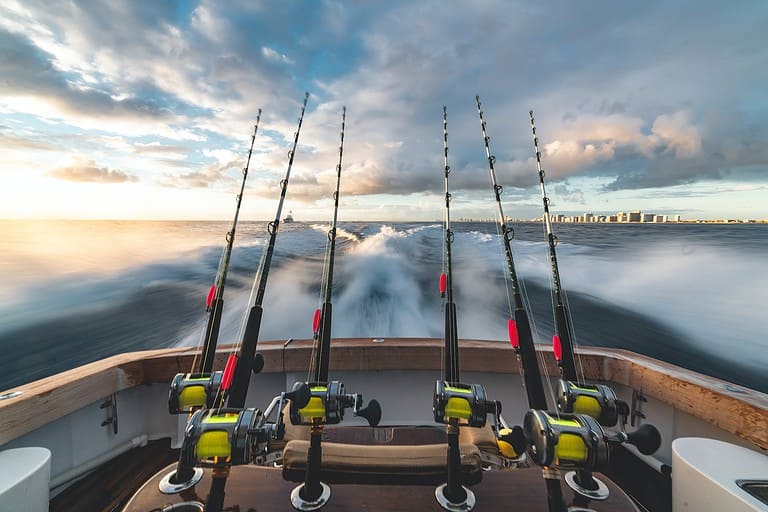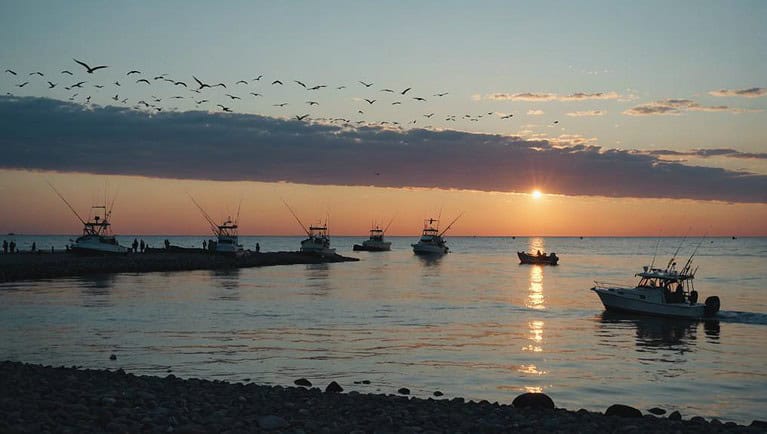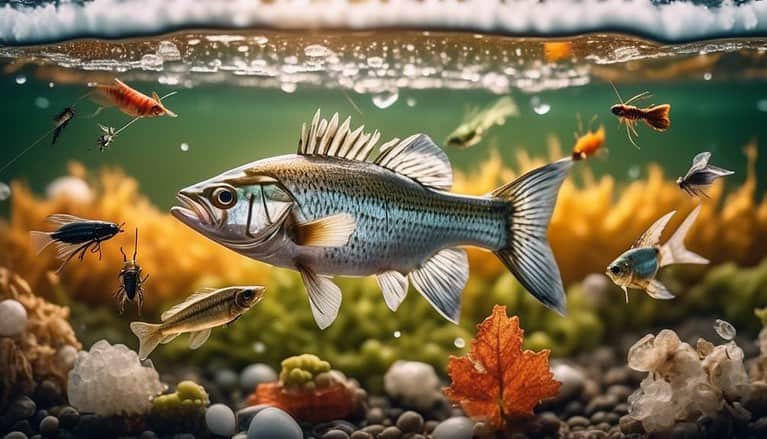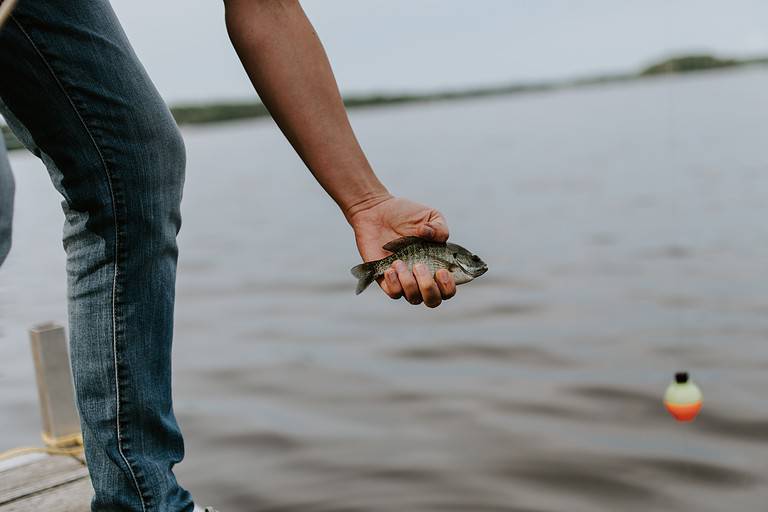Ultimate Guide to Walleye Fishing in Lake Erie: Seasonal Tips & Techniques
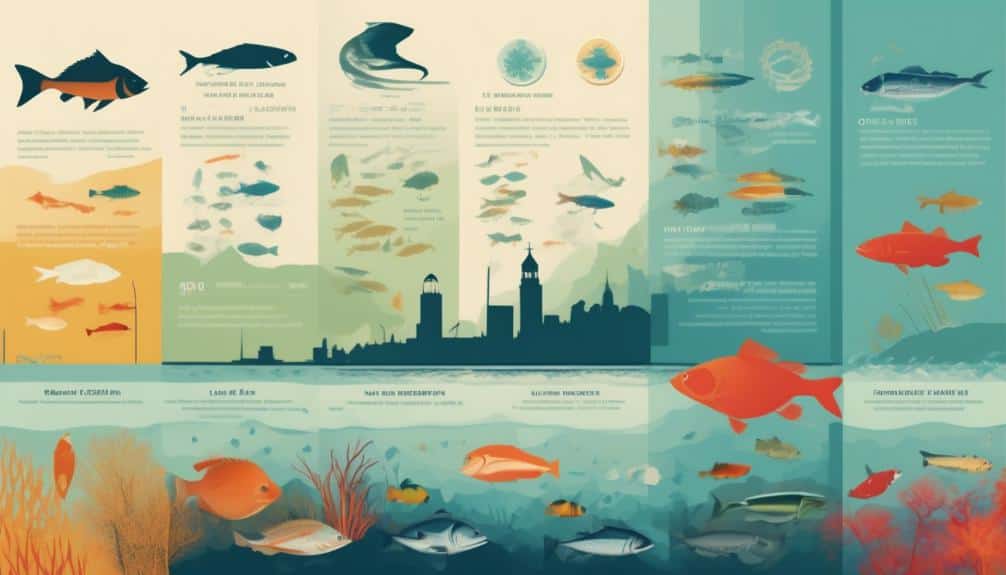
Have you ever wondered if there’s a science to predicting where and when the fish will bite in Lake Erie?
As you venture into the waters of this vast lake, it’s crucial to understand that the seasonal migration and patterns of fish such as walleye, perch, and bass aren’t left to chance. They follow a predictable rhythm that aligns with the changing seasons, each offering unique opportunities and challenges for anglers.
From the spring spawn to the winter freeze, knowing these patterns can significantly enhance your fishing expeditions.
So, if you’re keen on unlocking the secrets to successful fishing trips on Lake Erie, stick around as we’re about to embark on an exploration of its seasonal fish patterns, giving you the insider knowledge to plan your next outing with confidence.
Table of Contents
Key Takeaways
- Water temperature, prey availability, and spawning activities influence the behavior and habitat preferences of fish in Lake Erie.
- Different fishing techniques are required for targeting Walleye based on the season.
- Spring is a good time for jigging and light casting in shallow waters for spawning Walleye.
- Summer calls for trolling with deep-diving crankbaits in deeper, cooler waters for Walleye.
Understanding Lake Erie’s Seasons
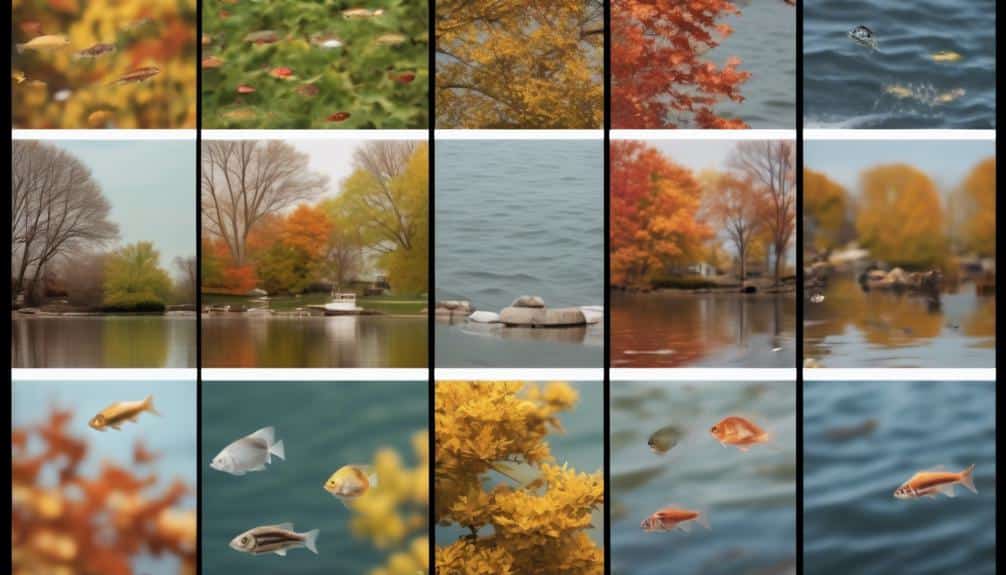
To effectively target Walleye in Lake Erie, it’s essential to understand how their behavior and habitat preferences shift with the seasons. Key factors influencing these changes include water temperature, prey availability, and spawning activities. These elements dramatically alter Walleye locations and, consequently, dictate optimal fishing techniques.
In spring, Walleye migrate to shallow waters for spawning, making them accessible to anglers employing jigging and light casting tactics. As temperatures rise in summer, Walleye retreat to deeper, cooler waters. Here, trolling with deep-diving crankbaits becomes a more effective technique.
The transition to fall sees Walleye moving again, this time to feed aggressively in preparation for winter. This period affords anglers the opportunity to use a mix of techniques, from trolling to casting with soft plastics or live bait, to capitalize on the Walleye’s increased appetite.
Winter presents the unique challenge of ice fishing, requiring specialized gear and strategies such as jigging with spoons or using tip-ups baited with minnows. Understanding these seasonal shifts and adapting your approach accordingly is crucial for successful Walleye fishing on Lake Erie, ensuring a rewarding experience across the year’s changing conditions.
Spring Fishing Hotspots
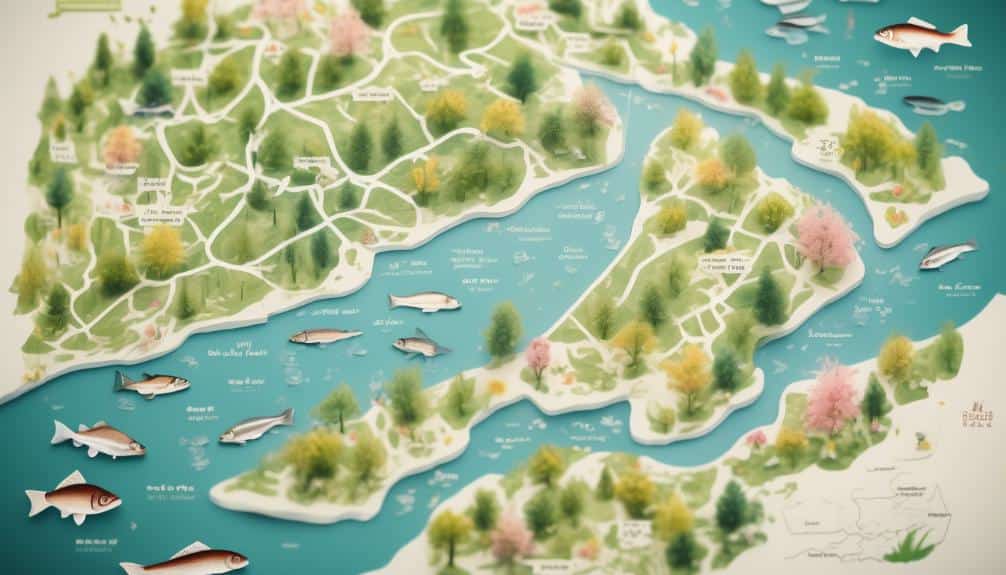
Understanding the seasonal behaviors of Walleye sets the stage for pinpointing prime spring fishing locations on Lake Erie. As the ice recedes and water temperatures gradually increase, Walleye migrate towards shallow, warmer waters for spawning. This shift offers an unparalleled opportunity for anglers to engage with these fish. Key factors such as water temperature, clarity, and the presence of baitfish play critical roles in determining hotspots.
When preparing for spring fishing on Lake Erie, it’s essential to consider:
- The significance of bait selection is aligning choices with the natural prey of Walleye during spring.
- Monitoring water temperatures in target areas that are slightly warmer, as Walleye are more active in these conditions.
- The importance of clarity and how slightly turbid waters can offer better chances, disguising the presence of anglers.
- Participating in local tournaments can provide insights into effective strategies and hotspots from experienced anglers.
- The role of underwater structures like reefs and drop-offs, which can concentrate fish,.
Analyzing these factors systematically can lead to a successful spring fishing experience on Lake Erie, optimizing your strategies around Walleye’s seasonal patterns.
Summer’s Prime Targets
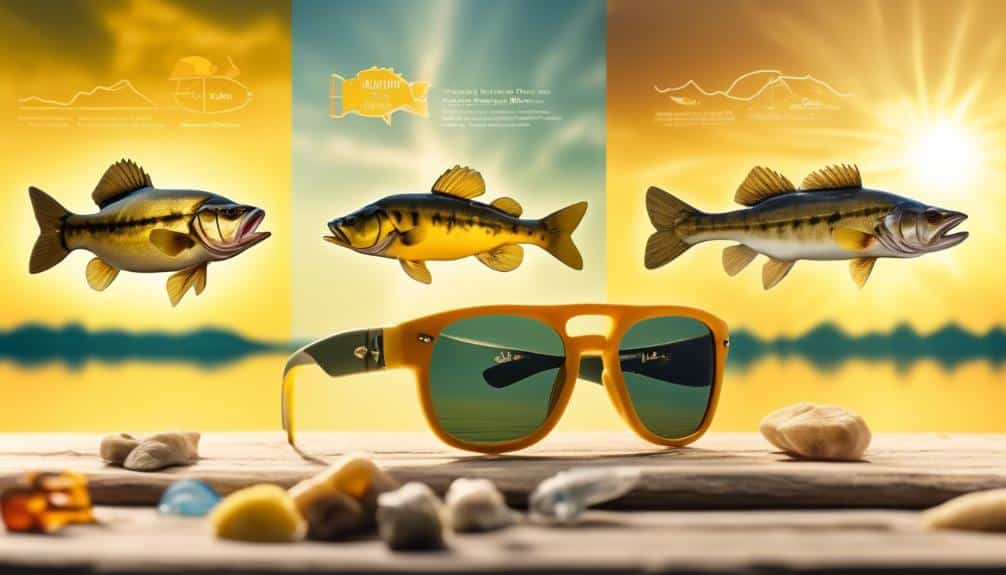
As summer arrives, Walleye and Smallmouth Bass become the prime targets for anglers on Lake Erie, migrating to deeper, offshore waters in pursuit of cooler temperatures. This seasonal movement presents an ideal scenario for fishing enthusiasts to refine their strategies and maximize their catches.
For targeting Walleye in deep offshore waters, the key lies in mastering vertical jigging and trolling techniques. July, being the peak of the Walleye fishing season, necessitates the use of sophisticated sonar equipment to locate schools of fish in the expansive, deep waters. Opting for lures that mimic the appearance and movement of the Walleye’s natural prey can significantly increase your chances of a successful catch.
Conversely, Smallmouth Bass offer a thrilling challenge during the summer months, requiring a different set of strategies. Focusing on areas with rocky bottoms and significant underwater structure in the Western Basin, where shallow waters heat up, can prove fruitful. Utilizing crankbaits and spinnerbaits that create vibration and flash can attract the attention of Smallmouth Bass, capitalizing on their predatory instincts.
Fall Feeding Frenzies
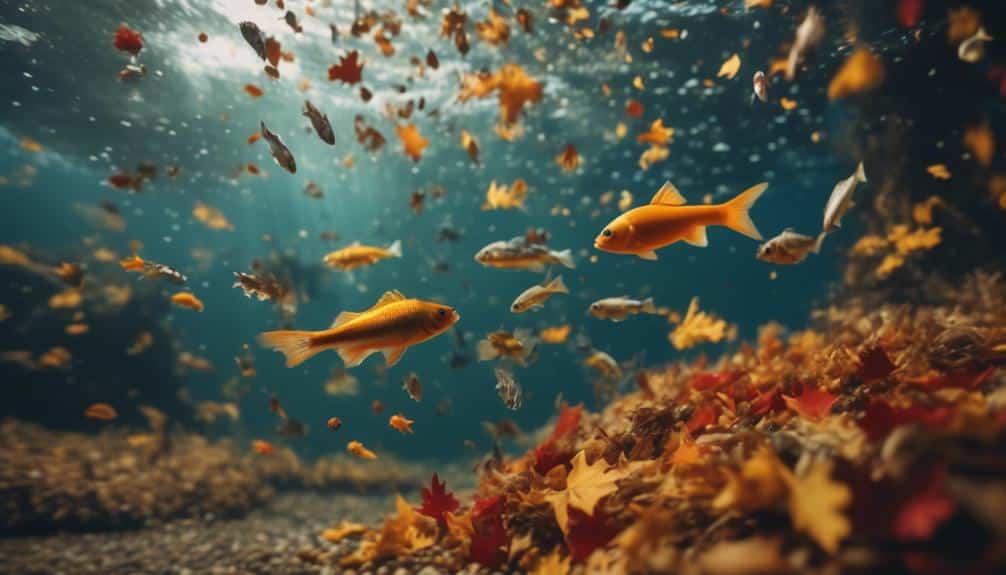
Fall’s cooler temperatures incite a dramatic shift in Lake Erie’s aquatic ecosystem, driving baitfish into shallower waters and sparking aggressive feeding frenzies among predatory fish like walleye and perch. This phenomenon not only signals a lively period for Lake Erie’s underwater inhabitants but also presents an unrivaled opportunity for anglers. To make the most of these fall feeding frenzies, understanding and applying the best fall fishing techniques, along meticulous tracking of baitfish movements, becomes paramount.
- Vibrant flashes of silver as schools of baitfish dart through the shallows, pursued by the shadowy figures of walleye and perch.
- The sudden, ferocious strikes on your line as a walleye intercepts the lure mimic the erratic movements of these baitfish.
- Clusters of anglers congregate near river mouths and rocky structures, where baitfish are known to seek refuge.
- The strategic casting of lines, with lures designed to imitate the injured baitfish that predators find irresistible,.
- The methodical monitoring of temperature gradients and water clarity is crucial for predicting the precise locations where baitfish will congregate.
In this dynamic environment, the angler’s success hinges on their ability to adapt to the changing conditions, employing a blend of scientific insight and angling skill to capitalize on the fall feeding frenzy.
Winter Ice Fishing Insights
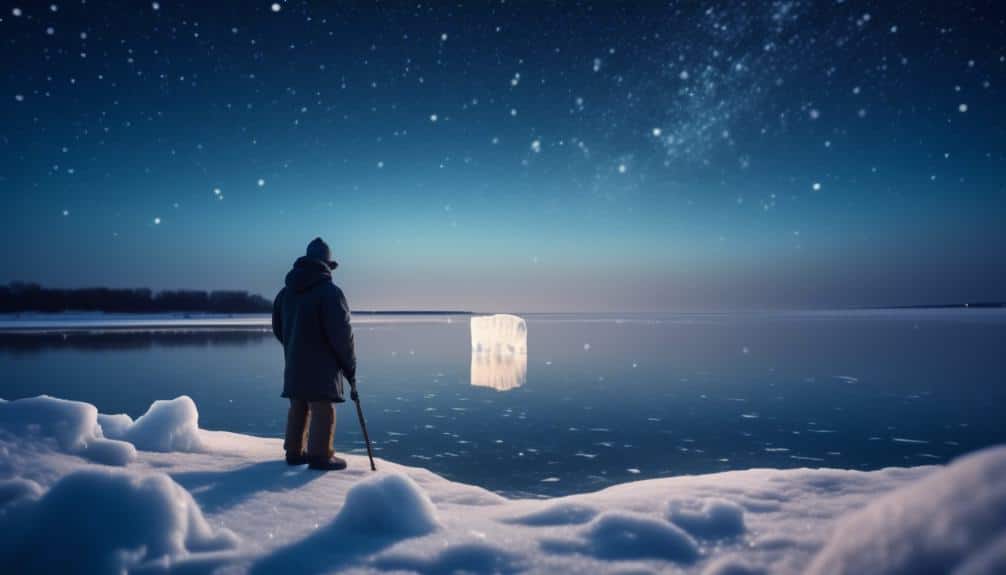
While the fall feeding frenzies offer a bustling spectacle, winter ushers in a quieter, yet equally rewarding, ice fishing season on Lake Erie, demanding a shift in strategies to outsmart Walleye in their deeper, colder habitats.
As temperatures plummet, Walleye descend to the lake’s depths, necessitating precise drilling techniques to breach the thickening ice layer. This period calls for methodical planning; identifying the correct spots where sand transitions to mud or gravel becomes pivotal. Such locations often serve as Walleye magnets due to the abundance of prey.
Jigging, employing spoons or minnow-imitating lures, emerges as a highly effective method to entice these elusive predators. The subtle movements of these lures, mimicking the erratic behavior of prey fish in frigid waters, can trigger aggressive strikes from Walleye.
However, safety precautions can’t be overstressed. Before you venture out, ensure the ice’s thickness meets recommended safety standards to support your weight. Fishing in pairs or groups adds a layer of security, providing immediate assistance in case of emergencies.
Embracing these safety measures and adjusting your approach to the winter conditions can yield a fruitful ice fishing experience on Lake Erie.
Frequently Asked Questions
What Month Is Best for Walleye Fishing Lake Erie?
For the best Walleye fishing in Lake Erie, July’s your month. By analyzing walleye migration, you’ll find optimal conditions and effective fishing techniques. They’re abundant, making it prime time to employ your skills.
What Is the Tastiest Fish in Lake Erie?
You’d find that while walleye’s often highlighted for its taste, perch offers a range of flavors that excel with various cooking methods, providing a subtly sweet taste that’s scientifically analyzed as exceptionally palatable and versatile.
What Is the Most Commonly Caught Fish in Lake Erie?
You’re barking up the right tree if you’re curious about Lake Erie’s most-caught fish. Walleye dominate the ecosystem, making them a staple catch and adhering to regulations to protect this prized species and its environment.
Where Is the Best Walleye Fishing on Lake Erie?
For the best Walleye fishing on Lake Erie, you’ll want to focus on the Eastern Basin. Master night fishing techniques and optimize your trolling speed to significantly increase your catch rates in these deeper waters.
Conclusion
As you’ve journeyed through Lake Erie’s seasonal shifts, it’s evident that this body of water is a kaleidoscope of aquatic life, mirroring the ever-changing seasons.
Think of it as an angler’s chessboard, where each season presents a new set of strategic moves.
With perch and walleye ruling the winter ice like kings on their frosty domain, Lake Erie exemplifies the dynamic dance of predator and prey.
This intricate ecological interplay ensures a rich, year-round fishing odyssey, marking Lake Erie as a paramount angling arena.
